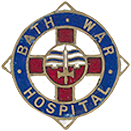Articles
Red Cross Hospital at Avoncliff
When the Bath War hospital first opened in May 1916 it had 500 beds, but due to the ever increasing number of casualties extra beds were put into the existing wards, and by 1917 large marquees were erected in the grounds to accommodate another 600 beds.
Flower Gardens at the Bath War Hospital
In August 1917 the Commandant of the Bath War Hospital organized a competition to encourage and reward the patients and staff who had developed and maintained the gardens around the hospital buildings.
Editor of ‘The Bath Bun’ – Charles Hampton Thorp
Charles edited the Bath Bun during his time at the Bath War Hospital, and it seems he sent a copy to his parents in New Zealand, as this news clipping shows.
Soldier ‘Stan’s’ letter
Our knowledge of Robert Stanley Morgan 'Stan’s story' comes from a letter he wrote to his sister from the hospital on the 12th October 1917.
A Soldier’s Story – Robert Stanley Morgan
A Soldier's Story is an account of how Robert Stanley 'Stan' Morgan, who was wounded during an attack on German lines north of Ypres, made his way from the front and eventually arrived at the Bath War Hospital. Many thanks to Dan Morgan, Stan's Grandson, for sharing his story and photos.
A tribute to the work of the Bath War Hospital
Perhaps the best tribute to all those involved in the establishment of the Bath War Hospital was published in the Bath Chronicle in 1928, just as the Pensions Hospital was about to close and the site was about to enter its third incarnation as the Royal United Hospital.
Locksbrook Cemetery
The number of deaths at the hospital was remarkably small, and those who died were buried in Locksbrook cemetery on the Upper Bristol Road.
The End of the War
The work of the Bath War Hospital did not cease with the signing of the armistice in 1918. When the Ministry of Pensions took over the hospital in November 1919 the total number of cases admitted was 24,333.
Health and Well-Being
The City of Bath had always been famous as a centre of healing, and its medical research and learning was much needed to treat the wounded soldiers who became patients at the War Hospital.
Surgical Requisites Association
The Surgical Requisites Association was an offshoot of Queen Mary’s Needlework Guild, who undertook to supply surgical dressings.










